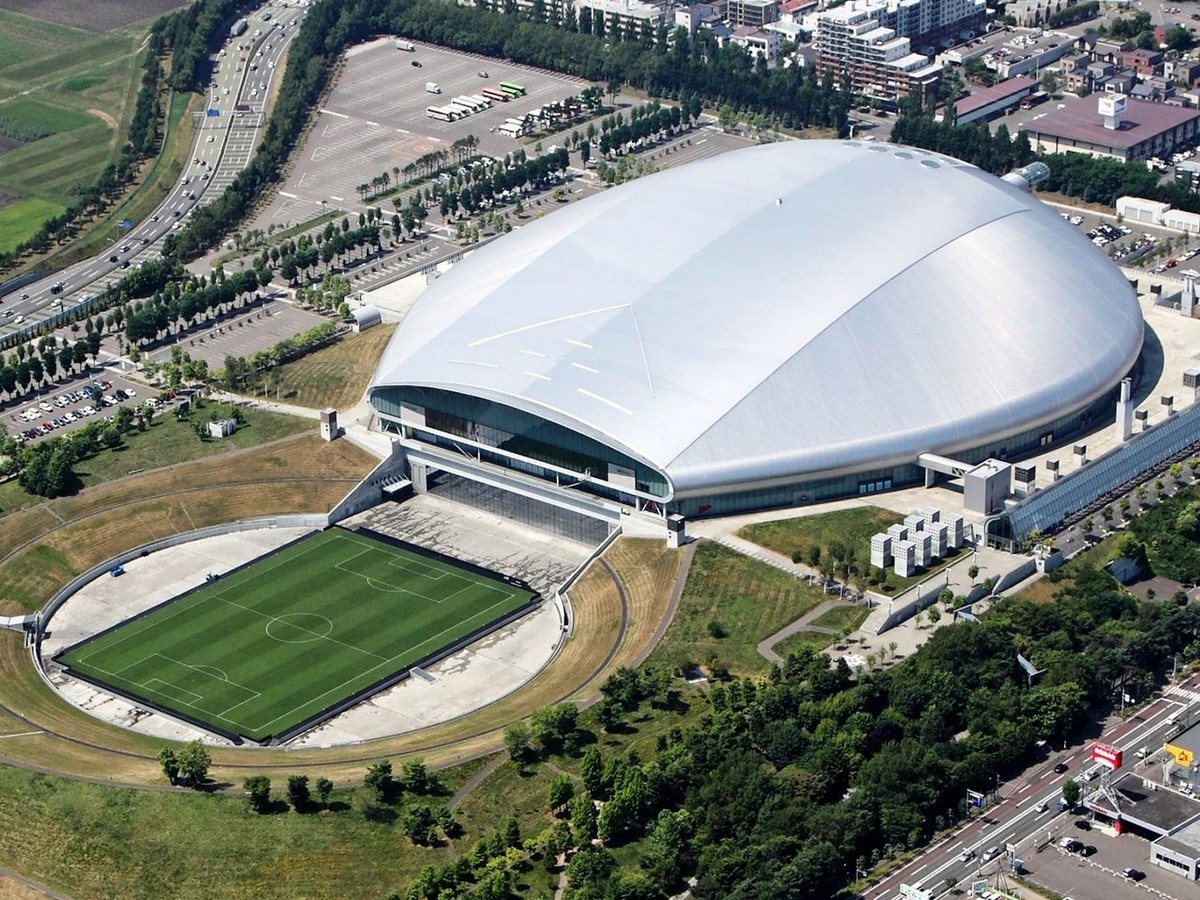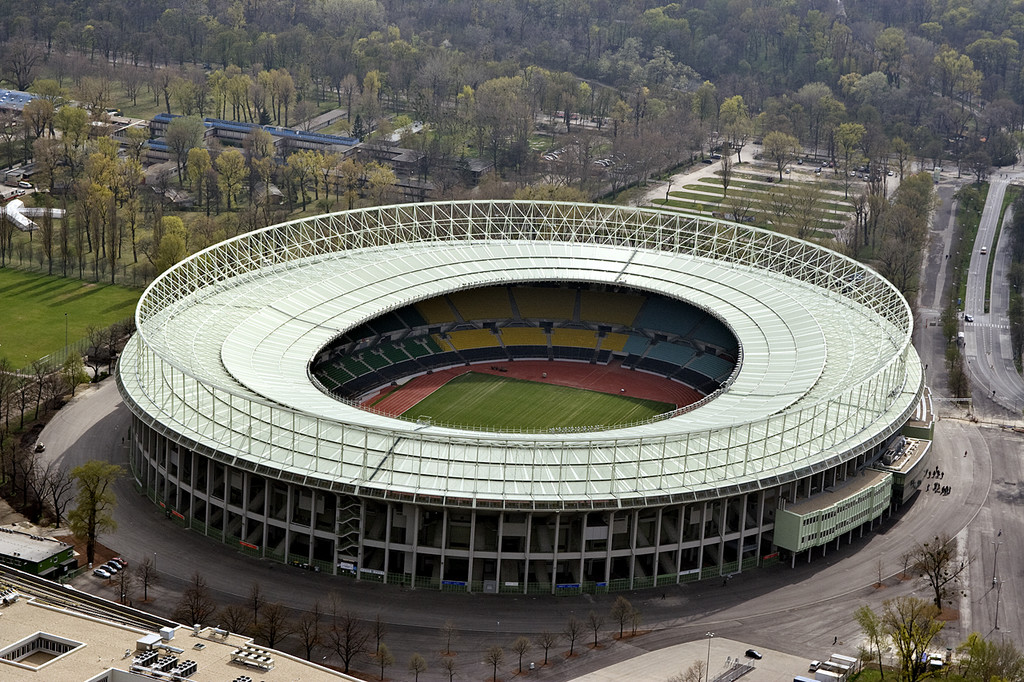“Football Stadiums Worth Visiting in Japan
Related Articles Football Stadiums Worth Visiting in Japan
Football Stadiums Worth Visiting in Japan

Japan, a land renowned for its rich culture, technological prowess, and breathtaking landscapes, also boasts a vibrant football scene. The J.League, Japan’s professional football league, has cultivated a passionate fanbase and a collection of impressive stadiums that offer a unique blend of sporting excitement and cultural immersion. For football enthusiasts planning a trip to Japan, visiting these stadiums is an absolute must. This article will explore some of the most captivating football stadiums in Japan, highlighting their architectural features, atmosphere, and the overall experience they offer.
1. Saitama Stadium 2002 (Saitama)
- Capacity: Approximately 63,700
- Home to: Urawa Red Diamonds
Saitama Stadium 2002, often referred to as "Saisuta," is the largest football-specific stadium in Japan and one of the iconic venues of the 2002 FIFA World Cup. Its design is both functional and aesthetically pleasing, featuring a bowl-shaped structure that provides excellent sightlines from every seat. The stadium’s atmosphere is electric, especially during matches involving the Urawa Red Diamonds, one of the most popular and fiercely supported clubs in the J.League. The sea of red that fills the stands, combined with the passionate chanting and drumming, creates an unforgettable experience.
Highlights:
- World Cup Legacy: Relive the memories of the 2002 FIFA World Cup, where Saitama Stadium hosted several key matches, including a semi-final.
- Urawa Red Diamonds Atmosphere: Experience the unparalleled passion of the Urawa Red Diamonds supporters, known for their unwavering loyalty and vibrant displays.
- Stadium Tours: Take a guided tour of the stadium to learn about its history, architecture, and the behind-the-scenes operations.
2. International Stadium Yokohama (Yokohama)
- Capacity: Approximately 72,327
- Home to: Yokohama F. Marinos

Also known as Nissan Stadium, International Stadium Yokohama is another prominent venue from the 2002 FIFA World Cup, hosting the final match between Brazil and Germany. Its massive capacity and modern facilities make it one of the premier stadiums in Japan. The stadium’s design incorporates elements of Japanese aesthetics, blending seamlessly with the surrounding landscape. Yokohama F. Marinos, one of the J.League’s most successful clubs, calls this stadium home, and their matches draw large crowds, creating a lively atmosphere.
Highlights:
- World Cup Final Venue: Walk in the footsteps of football legends and experience the grandeur of the stadium that hosted the 2002 FIFA World Cup Final.
- Yokohama F. Marinos Matches: Witness the skill and passion of Yokohama F. Marinos, a team known for its attacking style of play and talented players.
- Yokohama City Exploration: Combine your stadium visit with exploring the vibrant city of Yokohama, known for its international flair, delicious cuisine, and historical landmarks.
3. Panasonic Stadium Suita (Osaka)
- Capacity: Approximately 39,694
- Home to: Gamba Osaka
Panasonic Stadium Suita is a relatively new stadium, opened in 2015, and is widely regarded as one of the best football-specific stadiums in Japan. Its modern design, steep stands, and excellent acoustics create an intimate and intense atmosphere. The stadium was built with the support of donations from local residents and businesses, reflecting the strong connection between the club, Gamba Osaka, and the community. The stadium’s location in Expo Commemoration Park offers a pleasant setting for football fans.
Highlights:
- Modern Design and Atmosphere: Appreciate the stadium’s state-of-the-art facilities and the electric atmosphere generated by the passionate Gamba Osaka supporters.
- Community Involvement: Learn about the unique story of how the stadium was built through community donations, showcasing the strong bond between the club and its fans.
- Expo Commemoration Park: Enjoy the beautiful surroundings of Expo Commemoration Park, offering a range of attractions and activities for visitors.
4. Kashima Soccer Stadium (Kashima)
- Capacity: Approximately 40,728
- Home to: Kashima Antlers
Kashima Soccer Stadium holds a special place in Japanese football history as one of the first purpose-built football stadiums in the country. It hosted matches during the 2002 FIFA World Cup and has been the home of Kashima Antlers, one of the most successful clubs in the J.League, since its inception. The stadium’s intimate atmosphere and passionate supporters create a memorable experience for visitors.
Highlights:
- Historical Significance: Discover the legacy of Kashima Soccer Stadium as one of the pioneers of football-specific stadiums in Japan.
- Kashima Antlers Success: Witness the tradition of excellence of Kashima Antlers, a club known for its consistent success and strong youth development program.
- Local Charm: Experience the charm of Kashima, a town steeped in football history and known for its welcoming atmosphere.
5. Sapporo Dome (Sapporo)
- Capacity: Approximately 41,484 (football configuration)
- Home to: Hokkaido Consadole Sapporo
Sapporo Dome is a unique multi-purpose stadium known for its retractable pitch system, allowing it to host both football and baseball matches. The stadium’s futuristic design and innovative technology make it a fascinating venue to visit. Hokkaido Consadole Sapporo, the local J.League club, plays its home matches here, drawing passionate crowds from across Hokkaido.
Highlights:
- Retractable Pitch Technology: Marvel at the engineering feat of the retractable pitch system, which allows the stadium to seamlessly transition between football and baseball configurations.
- Hokkaido Consadole Sapporo Matches: Experience the passion of Hokkaido Consadole Sapporo supporters and enjoy the unique atmosphere of a dome stadium.
- Sapporo City Exploration: Explore the vibrant city of Sapporo, known for its delicious food, beer, and winter sports.
6. Denka Big Swan Stadium (Niigata)
- Capacity: Approximately 42,300
- Home to: Albirex Niigata
Denka Big Swan Stadium, located in Niigata, is a visually striking stadium with a distinctive swan-shaped roof, reflecting the city’s association with swans. The stadium’s spacious concourses and comfortable seating provide a pleasant experience for fans. Albirex Niigata, the local J.League club, enjoys strong support in the region, and their matches often draw large crowds.
Highlights:
- Unique Architectural Design: Admire the stadium’s distinctive swan-shaped roof, a symbol of Niigata.
- Albirex Niigata Support: Experience the passion of Albirex Niigata supporters, known for their unwavering loyalty and vibrant displays.
- Niigata Prefecture Exploration: Discover the natural beauty and cultural attractions of Niigata Prefecture, known for its rice, sake, and scenic landscapes.
7. Toyota Stadium (Toyota)
- Capacity: Approximately 45,000
- Home to: Nagoya Grampus
Toyota Stadium, located in Toyota City, is a modern and well-equipped stadium that offers excellent views from all seats. The stadium’s design incorporates elements of Japanese aesthetics, creating a visually appealing venue. Nagoya Grampus, one of the J.League’s established clubs, plays its home matches here, attracting a loyal fanbase.
Highlights:
- Modern Facilities and Design: Appreciate the stadium’s state-of-the-art facilities and the comfortable viewing experience it offers.
- Nagoya Grampus Matches: Witness the skill and passion of Nagoya Grampus, a team with a rich history and a dedicated following.
- Toyota City Exploration: Learn about the history of Toyota Motor Corporation and explore the city’s industrial heritage.
Tips for Visiting Football Stadiums in Japan:
- Purchase Tickets in Advance: J.League matches can be popular, so it’s advisable to purchase tickets in advance, especially for high-profile games. Tickets can be purchased online or at convenience stores.
- Arrive Early: Arrive at the stadium early to soak in the atmosphere and avoid long queues.
- Respect Local Customs: Be mindful of local customs and etiquette, such as refraining from excessive noise and cleaning up after yourself.
- Learn Some Basic Japanese Phrases: Knowing a few basic Japanese phrases will enhance your experience and allow you to interact with locals.
- Enjoy the Food and Drink: Stadiums in Japan offer a variety of food and drink options, so be sure to try some local specialties.
Conclusion:
Visiting football stadiums in Japan is a unique and rewarding experience for any football enthusiast. The stadiums themselves are architectural marvels, and the atmosphere generated by the passionate supporters is truly electric. By combining your stadium visits with exploring the surrounding cities and regions, you can create an unforgettable journey that blends sporting excitement with cultural immersion. So, pack your bags, grab your tickets, and get ready to experience the passion and excitement of Japanese football!

